- Home
- Paul Doherty
Templar
Templar Read online
THE TEMPLAR
Also by P. C. Doherty
The Rose Demon
The Song of the Gladiator
The Soul Slayer
The Queen of the Night
The Haunting
The Cup of Ghosts
Domina
The Canterbury Tales of mystery and murder
An Ancient Evil:
Being the Knight’s Tale
Ghostly Murders:
Being the Priest’s Tale
A Tapestry of Murders:
Being the Man of Law’s Tale
The Hangman’s Hymn:
Being the Carpenter’s Tale
A Tournament of Murders:
Being the Franklin’s Tale
The Sorrowful Mysteries of Brother Athelstan
The Nightingale Gallery
The House of Crows
The House of the Red Slayer
The Assassin’s Riddle
Murder Most Holy
The Devil’s Domain
The Anger of God
The Field of Blood
By Murder’s Bright Light
Hugh Corbett medieval mysteries
Satan in St. Mary’s
The Song of a Dark Angel
Crown in Darkness
Satan’s Fire
Spy in Chancery
The Devil’s Hunt
The Angel of Death
The Demon Archer
The Prince of Darkness
The Treason of the Ghosts
Murder Wears a Cowl
Corpse Candle
The Assassin in the Greenwood
The Magician’s Death
Ancient Egyptian mysteries
The Mask of Ra
The Poisoner of Ptah
The Horus Killings
The Assassins of Isis
The Anubis Slayings
The Spies of Sobeck
The Slayers of Seth
THE TEMPLAR
P. C. Doherty
Minotaur Books New York
This is a work of fiction. All of the characters,
organizations, and events portrayed in this novel
are either products of the author’s imagination
or are used fictitiously.
THE TEMPLAR. Copyright © 2007 by Paul Doherty. All
rights reserved. Printed in the United States of America.
For information, address St. Martin’s Press, 175 Fifth
Avenue, New York, N.Y. 10010.
www.minotaurbooks.com
Library of Congress Cataloging-in-Publication Data
Doherty, P. C.
The templar / P. C. Doherty. — 1st U.S. ed.
p. cm.
ISBN 978-0-312-57683-7
1. Knights and knighthood—France—Fiction.
2. Crusades—First, 1096–1099—Fiction. 3. Templars—History—Fiction. I. Title.
PR6054.O37T46 2010
823′.914—dc22
2010010445
First published in Great Britain by
Headline Publishing Group
First U.S. Edition: July 2010
10 9 8 7 6 5 4 3 2 1
Angela Francescotti dedicates
this book to her lovely granddaughter
Lucia Maria Francescotti
Main Historical Characters
POPES
Urban II (1098–99):
launched the First Crusade at Clermont in 1095.
LEADING FRANKS
Adhémar of Le Puy:
Bishop of Le Puy in southern France and papal legate on the Crusade.
Raymond of Toulouse:
Count of Toulouse and Lord of St Gilles. Leader of the southern French Crusaders (Provençals).
Bohemond of Taranto:
Leader of the southern Italian Norman Crusaders.
Godfrey of Bouillon:
Leader of a contingent of Crusaders from Lotharingia and Germany.
Robert of Normandy:
son of William the Conqueror and Duke of Normandy; leading figure amongst the northern French Crusaders.
Robert of Flanders:
Count of Flanders; leading figure amongst the northern French Crusaders.
Stephen of Blois:
Count of Blois; leading figure amongst the northern French Crusaders.
Hugh of Vermandois: (Hugh of Paris)
Count of Vermandois in northern France and brother of King Philip I of France.
Tancred of Hauteville:
Bohemond of Taranto’s nephew.
Baldwin of Boulogne:
Count of Boulogne; Godfrey of Bouillon’s ambitious brother.
Peter the Hermit:
charismatic preacher and leader of the People’s Crusade.
Peter Bartholomew:
Provençal visionary who ‘discovered’ the Holy Lance at Antioch.
friends, French knights on the First Crusade who later founded the Templar Order.
Raymond Pilet:
Provençal captain in Raymond of Toulouse’s army.
Walter de Sans-Avoir:
Lord of Boissy.
William the Carpenter:
French captain, noted for his cruelty.
BYZANTINES AND ARMENIANS
Alexius I Comnenus:
Emperor of Constantinople (1081–1118); founder of the great Comneni dynasty.
Manuel Boutoumites:
Greek envoy who ended the Siege of Nicaea.
Tacticius:
Greek general who accompanied the Franks to Antioch.
Thoros:
Armenian ruler of the city of Edessa; adoptive father of Baldwin of Boulogne, who killed him.
Firuz:
Armenian officer of Antioch, who betrayed the city.
MUSLIMS
Kilij Arslan:
(‘Sword of the Spirit’)
Seljuk Turkish Sultan of Rhum in Asia Minor.
Yaghi Siyan:
Governor of the city of Antioch.
Ridwan of Aleppo:
Siljuk ruler of the Syrian city of Aleppo; led Muslim relief force to Antioch.
Atabeg Khebogha:
Emir of Mosul and renowned general; Leader of a massive Muslim army to relieve Antioch.
Iftikhar:
Fatimid Governor of Jerusalem.
Author’s Note
The Templar is based not only on primary documents but on numerous accounts of people who actually travelled from Europe to take Jerusalem in July 1099. I have, at all times, tried to follow the tone of these accounts and the language they themselves use. A note at the end also comments on this extraordinary venture, which seared world history and had such long-term effects. The various crusading armies moved from France, Italy and Germany to Constantinople, then across to what is now modern Turkey, turning south into Syria and Palestine. The journey of the main army under Raymond of Toulouse was quite simple – across northern Italy, then following Via Egnetia along the Adriatic and into Greece. I have, however, included two maps to explain the great high points of the First Crusade, the Siege of Antioch in 1098 and that of Jerusalem in 1099. The main historical characters are listed, and their actions are based on the evidence of eyewitnesses. I have also kept to the simple division between two conflicting cultures in the Middle Ages. In the world of Islam, the term ‘Frank’ was used to describe any westerner. In turn, most Europeans were unaware of the different sects in Islam and generally used the terms ‘Turk’ or ‘Saracen’ to describe their opponents.
The City of Antioch: 1097
The City of Jerusalem: 1099
Prologue
Melrose Abbey, Scotland:
The Feast of St James, 25 July 1314
Regis Regum rectissimi prope est dies domini.
(The day of the Lord, of the most righteous King,
The Dies Irae of St Columba
The monk lifted his cowled head and peered through the lancet window overlooking the wild heathland of Melrose. Harvest time was close, but his task was only just beginning here in the stair tower of this ancient fortified manor house. He stared round the chamber at the neatly stacked ledgers, indentures, chronicles, letters and memoranda: these had all been collected from the libraries of the Order of the Temple and brought here in the summer of Our Lord 1314.
‘Everything we could steal or buy,’ the old woman murmured as she rested on her cane, staring through the small oriel window. She didn’t even bother to turn round.
‘Consummatum est – it is finished. Brother Anselm, you’ve heard the news?’
The young Cistercian monk coughed and nodded. He realised why he was here. He had been sworn to secrecy on the great leather-bound, gold-embossed Book of the Gospels chained to its lectern in the centre of the room.
‘Nineteenth March past,’ the old woman whispered. ‘Jacques de Molay, Grand Master of the Temple, and Geoffrey de Charny, Preceptor of Normandy, burnt at night fastened to a stake on the Île-de-France. Innocent they were . . .’ She hobbled over to Brother Anselm and smiled down at him.
‘Father Abbot,’ she leaned over and girlishly stroked the monk’s smooth cheek, ‘has released you from all duties.’ She waved round. ‘To form this into one seamless cloak. A chronicle of the Order of the Temple from its origins to the end.’ She grasped Anselm’s wrist; the grip was surprisingly strong, despite her apparent frailty. Her light grey eyes held his.
‘You are my kinsman Benedict; you have the sacred blood of the de Payens, the founders of that order.’
‘Domina, how shall I write it?’
‘As a chronicle,’ the old woman replied. She turned and walked over to the neatly stacked manuscripts. ‘As if you were there, Brother. Be like the prophet Ezekiel in the Valley of the Dead: breathe life, blood and flesh into these dry bones.’
Part 1
The Parish Church of St Nectaire in the Auvergne.
The Eve of the Feast of St Ignatius of Antioch,
16 October 1096
Dies irae et vindicatae tenebrarum et nebulae.
(A day of anger and of vengeance, of darkness
and thick clouds.)
The Dies Irae of St Columba
Duelling eagles had been seen fighting above the black curtain of trees, whilst in the night sky javelin threatened javelin beneath crossed swords. Blazing marriage torches had turned funereal. Winds started lightning bolts out of the clouds, which terrorised the people with their slanting flames. Comets scored the sky. Summers burned white-hot. Winter came in sheets of ice. Satan was seen everywhere. In that remote and unknown part of the great ocean called the Sea of Darkness, which teemed with monsters, devils could be seen rising from the midst of the waters, the fierce black band of the Prince of Demons, an awesome warning of what was about to happen. The time of confrontation had arrived.
The words of the Holy Father, Pope Urban II, had been released like darts the previous November. Jerusalem had to be liberated from the Turks. It was God’s will. Men, women and children began arming for war. They brought out shields, the paint peeling, their frames bare, javelins with their points forced back, swords, daggers and spears all blackened or rusting. Forges were fired in villages and hamlets, the hammering and pounding going on deep into the night. Flames leapt up against scorch-marked walls as the weapons of war were sharpened and refined ready to cull a bloody harvest. Horses were brought in, hooves and mouths checked. Sumpter ponies were trotted across icy meadows and carefully inspected. The Frankish world was about to move, to journey to Jerusalem and free the Lord’s Holy Places from Turkish hands. The people of the west hastened to fulfil the prophecies and portents as the skies clouded over with steel during the day and were riven at night by the clash of mythical weaponry. Masses were chanted, candles and tapers lit before the ghostly statues of a myriad of saintly protectors. Aves, Pater Nosters and Glorias were recited. Sins were shriven, penances accepted. Men, women and children took the cross, lying face down in a thousand freezing naves with the winter mist boiling along the mildewed flagstones beneath them whilst the carved face of their tortured Saviour stared down at them from the rood screen.
The great lords mortgaged their estates, pledged their revenues to the cross, begged pardon for sins and took the money offered by the good brothers of St Benedict to turn their ploughshares into swords and sickles into spears. Husbands swore fidelity towards their wives and loyalty to their kin as they drew up their last wills and testaments. Jerusalem called! Christ’s fief beckoned! God’s warriors were to free it from the hands of the Turks. Deus vult! God wills it! The cry echoed like a trumpet blast through the lands of the Franks. God’s will would be done! Nevertheless, the cross-bearers also dreamed of jade-green seas, of courtyards as wide as summer fields, of horses with manes the colour of the whitest wheat, of marbled porticoes, precious cloths of camlet, damask and brocade, of jewels as large as carbuncles, of warm, golden days well away from the cold, dank air of the forests or the gloomy mist-haunted woods of the west. The fire of expectation flared through the lands of the Franks; the flames of faith, hope and charity glowed alongside those of ambition, greed and lust. God’s will must be done in these last days. Men claimed the Apocalypse was imminent, the sudden rapture of the Day of Judgement, which was about to be sprung on every man like a trap. Nobody must be found wanting!
Nothing had been the same since the previous autumn, when a misty haze hung heavy over fields black and bare after the harvest had been gathered in. The grey walls of Clermont had become a shrine drawing in the caped churchmen with their glittering crosses, and the lords, their banners and gonfalons of red, gold and lily-white snapping in the breeze. On a purple dais, a curly-bearded cleric, shoulders weighed down by a pure white gold-embroidered pallium, delivered God’s message. Pope Urban II added his own summons. ‘I speak to you who are present here,’ he began in a ringing voice. ‘I announce it to those who are absent that Christ has ordained this. From the borders of Jerusalem to the city of Constantinople, terrible tidings have gone forth. A certain race has emerged from the Kingdom of the Persians, a barbarous people who have invaded the lands of the Christians of the east and depopulated them by fire, steel and ravage. Such invaders, Turks and Arabs, have advanced through the empire of Constantinople as far as the Middle Sea and as far as the straits which are called the Arm of St George. The empire of Constantinople is now mutilated. Until this present year the empire has been our defence; now it is in dire need. These Turks have driven away many Christian captives to their own country. They have torn down the churches of God or used them for their own rites. What more can I say to you? Listen now, these pillagers pollute the altars with the filth of their bodies. They circumcise Christians and pour the blood of the circumcision upon our altars or into baths and fonts. They use our churches now withdrawn from the service of God to stable their horses. Yes, these churches are served not by holy men; only the Turks may use them. Even now the Turks are torturing Christians, binding them and filling them with arrows or making them kneel, bending their heads so their swordsmen can cut through their necks with the single blow of a naked sword. What shall I say about the rape of women? To speak of that is worse than to be silent. You in France have heard the murmur of agonies from beyond the borders of Iberia! The time may well come when you will see your own wives violated and your children driven before you as slaves out of the land.
‘Reflect also on those fellow Christians who have travelled the seas as pilgrims. If they carry money, they are forced to pay taxes and tribute every day at the gates of cities and the entrances to churches. If they are accused of anything, they are forced to buy their freedom again, and as for those who have no money but trust in Lady Poverty, what of them? They are searched. They even have the calluses cut from their bare heels to see if they have sewn something there. The
y are given poison to drink until they vomit and burst their bowels to show if they have swallowed coins. More often their stomachs are cut open to be searched; their intestines pulled forward and slit so that what is hidden may be revealed. Who can relate this without sorrow? These are your blood brothers, children of Christ and sons of the Church. On who else will fall the task of vengeance and justice unless on you who have won such glory in arms? You have the courage and the fitness of body to humble the hand lifted against you.’
Urban, his voice thrilling with passion, now turned his anger on his listeners. ‘You are girded knights, yet you are arrogant with pride! You turn on your brothers with fury, cutting down one then the other. Is this the service of Christ? Let us hold to the truth! To our shame: this is not our way of life! Orphaners of children, despoilers of widows, slayers of men! You reek of sacrilege! You are murderers awaiting the payment of blood-guilt. You flock to battle like vultures that glimpse a corpse from afar. This is hideous! If you would save your souls, lay down the guilt of such knighthood and come to the defence of Christ. All you who carry on feuds, go to war against the Turks! You who have become thieves become soldiers, fight the just war, labour for the everlasting reward! Let no obstacle turn you aside; arrange your affairs, gather together supplies, enter upon this journey when winter is ended. God will guide you . . .’

 Book of Shadows
Book of Shadows The Merchant of Death
The Merchant of Death Dark Queen Waiting
Dark Queen Waiting Devil's Wolf
Devil's Wolf The Lord Count Drakulya
The Lord Count Drakulya A Shrine of Murders
A Shrine of Murders The Eye of God
The Eye of God A Maze of Murders
A Maze of Murders The Hangman's Hymn
The Hangman's Hymn The Godless
The Godless Death's Dark Valley
Death's Dark Valley Queen of the Night ar-4
Queen of the Night ar-4 Ghostly Murders
Ghostly Murders Saintly Murders
Saintly Murders The Field of Blood
The Field of Blood Hugh Corbett 10 - The Devil's Hunt
Hugh Corbett 10 - The Devil's Hunt Assassin in the Greenwood hc-7
Assassin in the Greenwood hc-7 The Song of the Gladiator
The Song of the Gladiator Hugh Corbett 17 - The Mysterium
Hugh Corbett 17 - The Mysterium The Mask of Ra
The Mask of Ra An Evil Spirit Out of the West (Ancient Egyptian Mysteries)
An Evil Spirit Out of the West (Ancient Egyptian Mysteries) Herald of Hell
Herald of Hell Mathild 03 - The Darkening Glass
Mathild 03 - The Darkening Glass Dark Serpent (Hugh Corbett 18)
Dark Serpent (Hugh Corbett 18)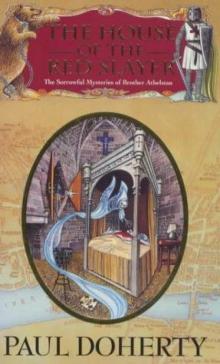 House of the Red Slayer smoba-2
House of the Red Slayer smoba-2 The Gallows Murders
The Gallows Murders The Straw Men
The Straw Men The Great Revolt
The Great Revolt The Rose Demon
The Rose Demon By Murder's bright light smoba-5
By Murder's bright light smoba-5 Templar
Templar Murder Most Holy
Murder Most Holy The House of Shadows
The House of Shadows A Brood of Vipers srs-4
A Brood of Vipers srs-4 Song of a Dark Angel hc-8
Song of a Dark Angel hc-8 Satan in St Mary hc-1
Satan in St Mary hc-1 Mathilde 01 - The Cup of Ghosts
Mathilde 01 - The Cup of Ghosts The Anger of God smoba-4
The Anger of God smoba-4 Isabella and the Strange Death of Edward II
Isabella and the Strange Death of Edward II The Midnight Man ctomam-7
The Midnight Man ctomam-7 The Assassin's Riddle
The Assassin's Riddle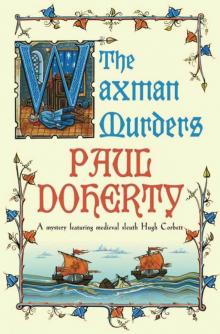 Hugh Corbett 15 - The Waxman Murders
Hugh Corbett 15 - The Waxman Murders Bloodstone smoba-11
Bloodstone smoba-11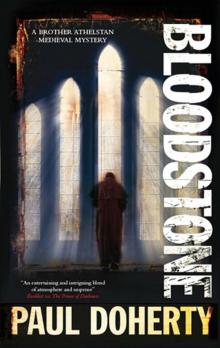 Bloodstone
Bloodstone The Gallows Murders srs-5
The Gallows Murders srs-5 The Midnight Man
The Midnight Man A Brood of Vipers
A Brood of Vipers The Templar Magician
The Templar Magician Hugh Corbett 11 - The Demon Archer
Hugh Corbett 11 - The Demon Archer Hugh Corbett 14 - The Magician's Death
Hugh Corbett 14 - The Magician's Death Candle Flame
Candle Flame The Nightingale Gallery smoba-1
The Nightingale Gallery smoba-1 The Anger of God
The Anger of God The Book of Fires
The Book of Fires Prince of Darkness hc-5
Prince of Darkness hc-5 The House of Crows smoba-6
The House of Crows smoba-6 The Grail Murders
The Grail Murders By Murder's Bright Light
By Murder's Bright Light House of the Red Slayer
House of the Red Slayer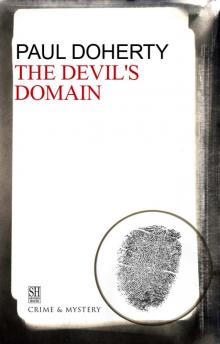 The Devil's Domain
The Devil's Domain The Relic Murders srs-6
The Relic Murders srs-6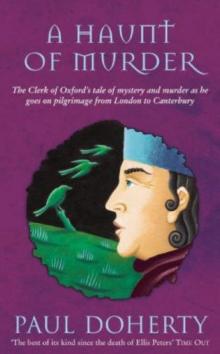 A haunt of murder ctomam-6
A haunt of murder ctomam-6 The Straw Men smoba-12
The Straw Men smoba-12 Hugh Corbett 06 - Murder Wears a Cowl
Hugh Corbett 06 - Murder Wears a Cowl An Ancient Evil (Canterbury Tales Mysteries)
An Ancient Evil (Canterbury Tales Mysteries) The Grail Murders srs-3
The Grail Murders srs-3 The Fate of Princes
The Fate of Princes The poisoned chalice srs-2
The poisoned chalice srs-2 Hugh Corbett 12 - The Treason of the Ghosts
Hugh Corbett 12 - The Treason of the Ghosts Hugh Corbett 13 - Corpse Candle
Hugh Corbett 13 - Corpse Candle The Season of the Hyaena (Ancient Egyptian Mysteries)
The Season of the Hyaena (Ancient Egyptian Mysteries) The White Rose murders srs-1
The White Rose murders srs-1 The Devil's domain smoba-8
The Devil's domain smoba-8 A Pilgrimage to Murder
A Pilgrimage to Murder Roseblood
Roseblood The Relic Murders
The Relic Murders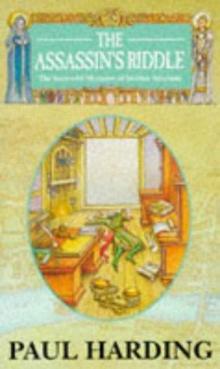 The Assassin's riddle smoba-7
The Assassin's riddle smoba-7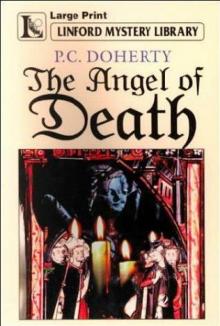 Angel of Death hc-4
Angel of Death hc-4 Dark Queen Rising
Dark Queen Rising The Nightingale Gallery
The Nightingale Gallery The House of Crows
The House of Crows Spy in Chancery hc-3
Spy in Chancery hc-3